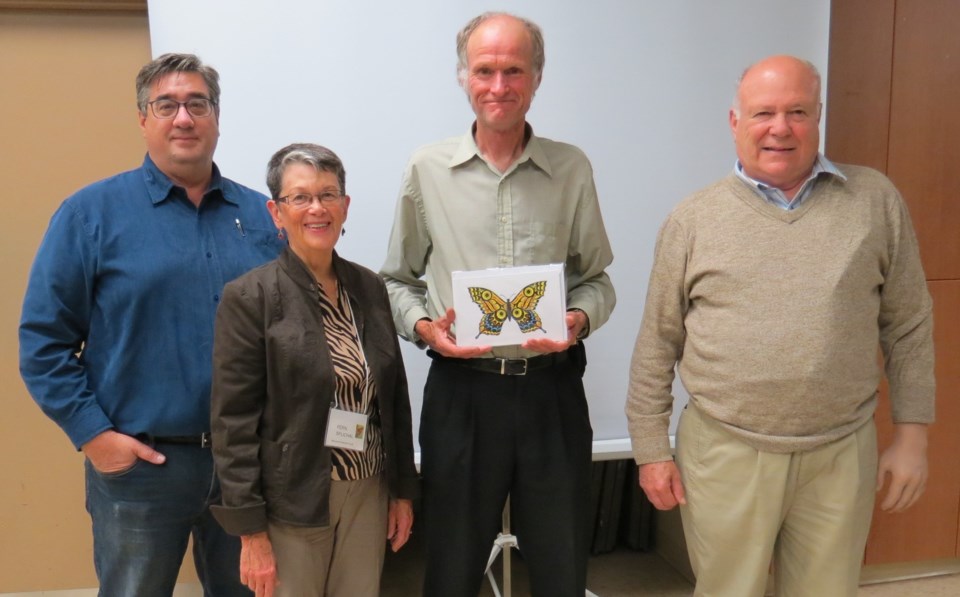NEWS RELEASE
ORILLIA NATURALISTS’ CLUB
***********************
What do ladies, admirals, skippers and hairstreaks all have in common? They are all butterflies, of course!
On October 3, 2018 the Orillia Naturalists’ Club had their first meeting of the season. It was a full house for James Kamstra, the guest speaker. The title of his presentation was “Butterfly Wonder” and after listening to his engaging presentation, it’s no wonder people swarmed in.
Kamstra is a biologist currently employed as an ecologist and an environmental consultant with AECOM performing biodiversity inventories and impact assessments.
He holds a Bachelor of Science from Trent University and a Masters in Environmental Studies from York University. He is also the Ontario Regional Editor for the North American Butterfly Association.
He began with sharing his childhood fascination with butterflies when the practice of the day was to have “collections”.
Fortunately, this is no longer the case.
Kamstra went on to explain the difference between butterflies and moths with a key difference being the antennae. Butterflies have club on their antennae and moths have a straight, or feathery, antennae without a club.
He reviewed the butterfly lifecycle and explained the over-wintering habits of some Ontario species. For example, monarchs migrate, hairstreaks overwinter as an egg on oak trees and swallowtails overwinter as a pupa. Some, like the comma and mourning cloaks overwinter as adults.
He listed and summarized the butterfly families – swallowtails; sulfurs and whites; gossamer wings and the brush-foots. He referred to brush-foots as “typical” butterflies and includes such species as monarchs, painted ladies and viceroys.
Brush-foots, like all insects, have six legs, but, in this case, the first two are tiny and hidden, therefore they appear to have four legs.
And, finally, he discussed conservation. Like so many species, butterfly populations are declining. Factors affecting this are habitat loss from intensive agriculture and urban development. Also, the increase in invasive plant species is reducing habitat.
Ending on an up note, Kamstra said he feels the good news for butterflies is that they are adaptable and can exist in small home ranges and they are able to colonize new habitats that become available since roads are not barriers to them. A number of species have expanded their ranges northward in recent decades.
The best advice from James Kamstra? Get out there and enjoy them!
Mark Nov. 7 on your calendar for the next Orillia Naturalists’ Club meeting and join the flock for “Our Amazing Canada Jays” with Dan Strickland, a retired Chief Park Naturalist, Algonquin Provincial Park .
This session will be at the Orillia Museum of Art and History, second floor, at 7:30 p.m.
***********************
